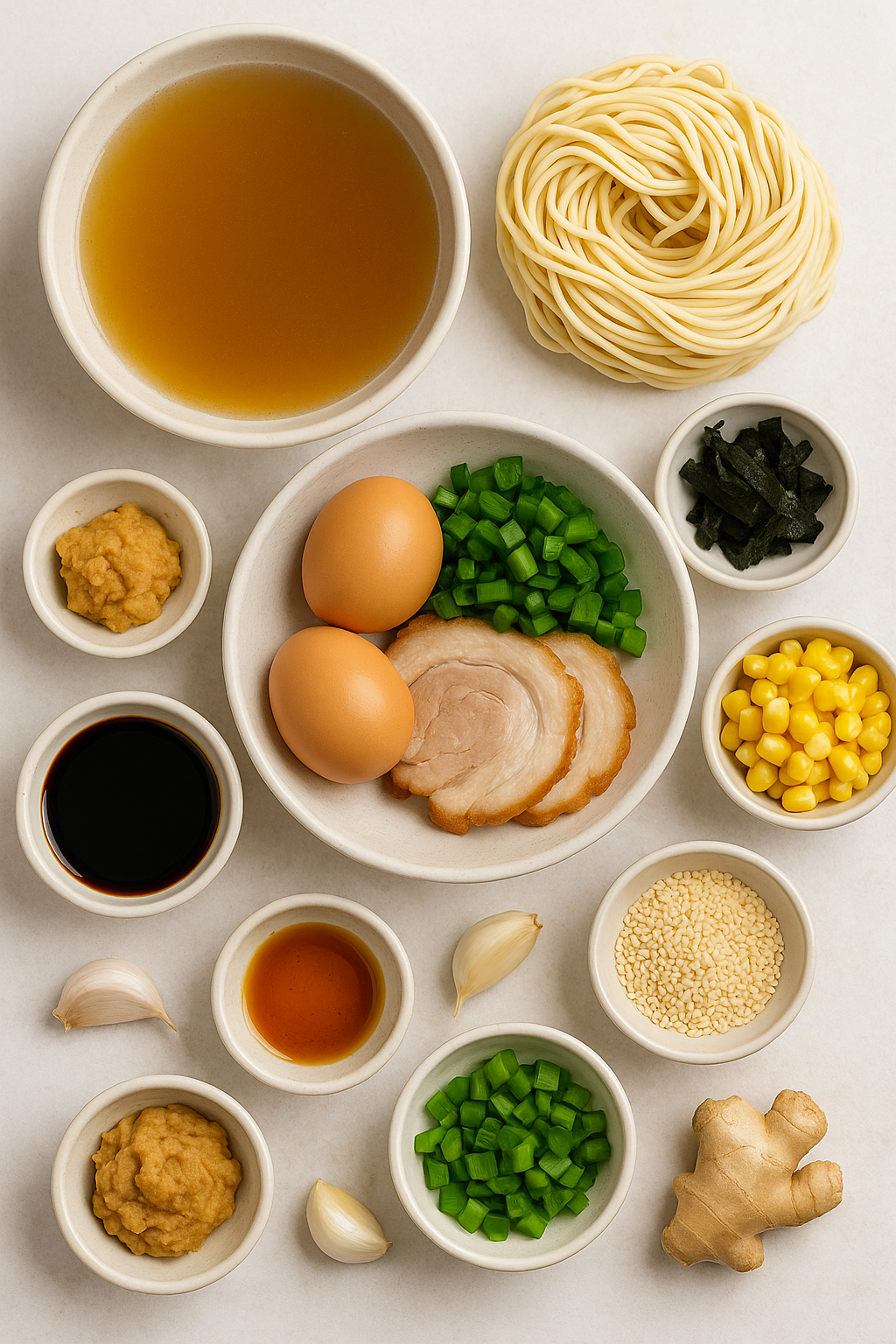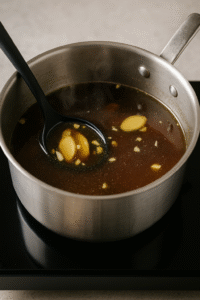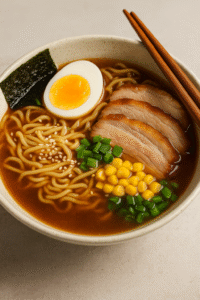Introduction
Ramen is more than just a quick noodle soup – it is a cultural icon of Japan. Originally introduced from China in the late 19th century, ramen evolved into countless regional varieties across Japan, each with its own flavor profile and tradition. Today, ramen is enjoyed worldwide, from Tokyo’s bustling ramen shops to homemade bowls prepared in kitchens like yours.
This authentic Japanese ramen recipe focuses on creating a balanced, umami-rich broth paired with springy noodles and classic toppings. While there are many styles of ramen, the most famous include shoyu ramen (soy sauce-based broth), miso ramen (flavored with fermented soybean paste), and tonkotsu ramen (creamy pork bone broth). Our recipe is a simplified version that captures the essence of ramen without requiring hours of preparation or specialized equipment.
Making this Authentic Japanese Ramen at home may sound intimidating, but with the right steps you can replicate the comforting flavors of a restaurant-quality bowl. The key lies in building layers of flavor in the broth, cooking the noodles correctly, and assembling the toppings just before serving.
For those who want to dive deeper into the cultural background, check out the Wikipedia article on Ramen, which explains its fascinating journey from a simple noodle dish to a global food phenomenon.
If you enjoy this Authentic Japanese Ramen recipe, you might also like some of our other authentic recipes such as Spaghetti Carbonara and Chicken Teriyaki. Both, like ramen, demonstrate how everyday ingredients can be transformed into truly memorable dishes.
Table of Contents
Tips & Tricks
Japanese Ramen Recipe
- Choose the right noodles: Authentic ramen noodles are made with wheat flour and kansui (alkaline water), which gives them their signature chewiness. If you can’t find them, substitute with thin egg noodles.
- Don’t overcook noodles: Ramen noodles cook quickly – usually in 3–4 minutes. Always taste a strand before draining.
- Layer flavors in the broth: Start with garlic and ginger, then add soy sauce, sesame oil, and miso for depth. A splash of mirin balances saltiness with a touch of sweetness.
- Vegetarian option: Replace chicken or pork broth with a rich vegetable stock made from kombu (dried kelp), shiitake mushrooms, and miso paste.
- Toppings matter: The most iconic toppings are chashu pork, soft-boiled eggs, nori, and scallions, but you can get creative. Add sautéed mushrooms, bok choy, bean sprouts, or spicy chili paste for extra flavor.
- Meal prep hack: You can prepare the broth 1–2 days in advance and store it in the fridge. This allows the flavors to meld even further.
- Make it spicy: Stir in chili oil, rayu, or even a spoonful of Korean gochujang paste for a bold, fiery ramen bowl.

Authentic Japanese Ramen Recipe
Ingredients
Equipment
Method
- Prepare the broth: In a large pot, heat sesame oil. Add garlic and ginger, sauté for 1–2 minutes until fragrant. Pour in the broth, add soy sauce, miso paste, and mirin. Simmer gently for 20–25 minutes.

- Cook the noodles: In a separate pot, bring water to a boil. Add ramen noodles and cook according to package instructions (usually 3–4 minutes). Drain well.
- Prepare toppings: Soft-boil the eggs (6 minutes), then cool them in ice water and peel carefully. Slice the meat thinly and chop the spring onions.
- Assemble the bowls: Divide noodles into 4 serving bowls. Pour the hot broth over them. Arrange sliced meat, half an egg, corn, spring onions, and nori strips on top.

- Garnish and serve: Sprinkle with sesame seeds and adjust flavor with soy sauce or chili oil. Serve immediately while hot.

Notes
Conclusion
Cooking ramen at home is both rewarding and fun. This homemade This homemade authentic Japanese ramen recipe recipe strikes the perfect balance between accessibility and authenticity. You don’t need a restaurant kitchen to enjoy a comforting bowl of ramen – just a few simple ingredients and a bit of patience.
Whether you prefer the richness of pork belly or the lighter option of chicken, this recipe allows you to adapt and make it your own. The chewy noodles, flavorful broth, and fresh toppings come together in harmony, making every spoonful deeply satisfying.
Sharing ramen with family or friends is also part of the joy. Preparing the toppings and setting the table with steaming bowls creates a dining experience that feels warm and communal. Ramen is more than food – it’s comfort, tradition, and a reminder of how simple ingredients can become something extraordinary.
Storage & Reheating
Ramen is best enjoyed fresh, but with the right preparation, you can make parts of it ahead:
- Broth: Store in an airtight container in the refrigerator for up to 3 days, or freeze for up to 1 month. Reheat gently on the stove before serving.
- Noodles: These should be cooked just before serving. If you must store them, toss with a few drops of sesame oil and refrigerate for up to 2 days. Avoid freezing noodles.
- Toppings: Chashu pork and soft-boiled eggs can be stored in airtight containers in the fridge for 2–3 days. Reheat meat gently before serving.
- Reheating tip: Always reheat the broth first, then add the noodles and toppings just before serving. This keeps the noodles from turning mushy and preserves the authentic texture of ramen.
🍜 Recommended Products for Authentic Japanese Ramen
- 🍜 Japanese Ramen Bowl Set (Ceramic, 2 pcs)
- 🥢 Reusable Bamboo Chopsticks – Set of 10
- 🥄 Ramen Spoon Set – Stainless Steel (2 pcs)
- 🍶 Kikkoman Soy Sauce (1L)
- 🍲 Non-Stick Soup Pot – 28 cm with Lid
As an Amazon Associate, I earn from qualifying purchases.


